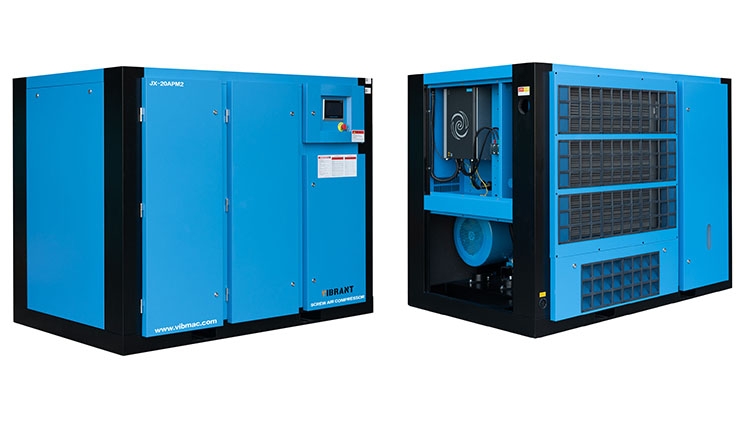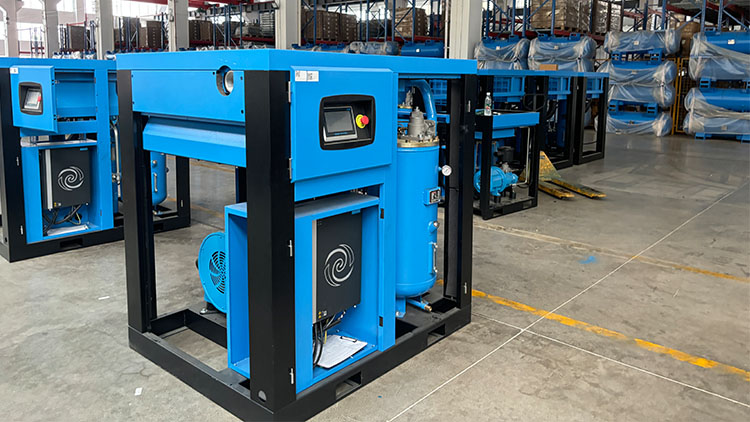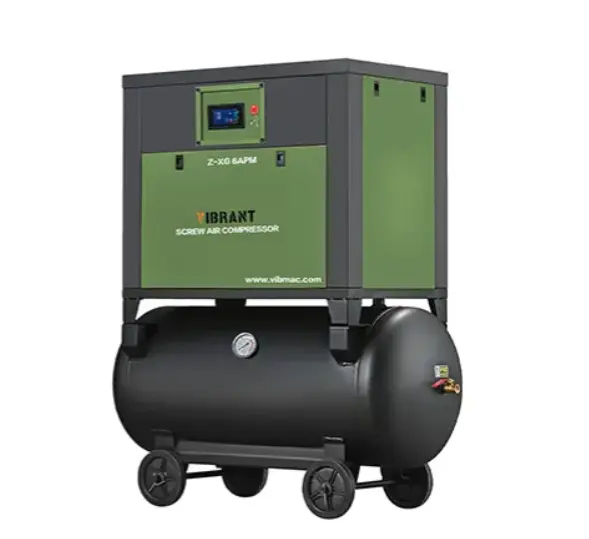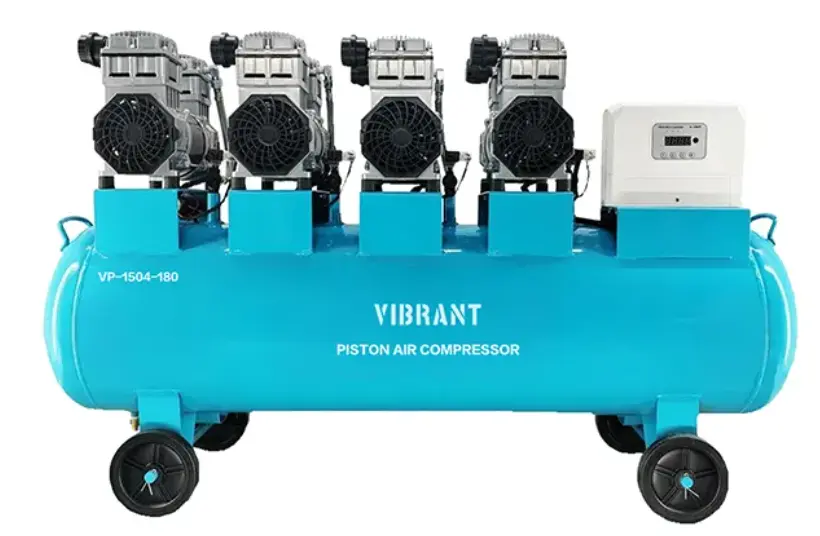Everything You Need to Know about Fixed Speed Compressors for Industrial Applications
In any business, a compressed air system plays an essential role in operational and marketing processes. The simplest to work with and most common in use are fixed-speed compressors. In this article, we aim to explain the working characteristics of Fixed Speed Compressor for Industrial Applications, their strengths and weaknesses, and how to optimize their use.
Understanding Fixed Speed Compressors
The value of compressed air produced is constant with a fixed-speed compressor. Fixed speed compressors run constantly at maximum output. Unlike variable speed compressors, fixed speed units run at full power when active and do not adjust the motor speed based on air demand.
Reliability: Ideal for operations demanding a steady flow of compressed air, fixed speed units ensure delivery of the set volume of air.
Streamlined Construction: Having fewer parts makes the unit easier to maintain and operate, hence, less complicated.
Cost-Effective: When considering the initial payment, they are generally less expensive than the variable speed models.
Use within Industrial Fields
For applications with a relatively constant demand for compressed air, fixed-speed compressors are most appropriate. Some of the industries benefiting from these include:

Electronic Products Manufacturing
Fixed speed compressors ensure clean air is constantly supplied for the operation of tools, air-powered grippers, and automatic airlock machines. Fixed speed pumps are crucial nowadays in automation assembly and clean processes: they are utilized in surface-mounted device (SMD) applications, during printed circuit board (PCB) fabrication, and automated subassembly systems. Besides ensuring the space is free from contamination, fixed-speed pumps assist in regulating the temperature and humidity of the delicate electronic devices.
Automobile Industry
Fixed speed air compressors are widely used in impact wrenches, sanders, and spray painting equipment used for automotive assembly, painting, and maintenance. Commanded airflow is also necessary for robotic arms as well as for precision paint application. During automotive assembly, the use of compressed air is a constant need, thus relying heavily on fixed-speed pumps.
Textile Industry
Air compressors hold a critical role in serving powered equipment such as looms, dyeing machines, and spinning machines because of the prevalence of spun yarns within the textile field. Fixed speed compressors serve a purpose in the later stages of packaging, as well as during weaving and yarn processing. It is during these phases that fabric quality is preserved and downtime minimized, which enhances operational efficiency. Dependably achieving cost efficiency during scheduled package processes further enhances value.
Technical Specifications consider
When selecting a fixed speed compressor, the following criteria must be fulfilled:
- Horsepower (HP): The upper limit of industrial HP is 200; this section gives insight into power produced, in this case, 5 to 200 is the range.
- Cubic Feet per Minute (CFM): the volumetric measurement of air must be provided within a specific application.
- Pressure rating (PSI): Between 100 and 175 is the industry standard for compressors.
- Tank Size: Besides decreasing the lower motor cut-in frequency, larger tanks improve the amount of air that can be stored.

Advantages of Fixed-Speed Compressors
Trustworthy: Due to their simple design and solid construction, fixed-speed compressors are highly reliable, minimizing any potential mechanical failure.
Easy to Maintain: TCPs with a Simple Design allow staff to carry out planned technical maintenance promptly, which streamlines routine maintenance.
Economical: Companies with tight budgets will benefit most from the lower cost of investment and maintenance, leaving the strict financial plans unchanged.
Ideal for maintaining a constant workload: Ideal for processes that need a continuous and smooth flow of air.
Tip for Maintenance Requirements
The scope of modifying these compressors requires avoiding schematics that are based on costly repair. Major servicing activities are as follows:
•Filter Replacement: Protects the system from polluted air is limited to emissions and contaminated air.
•Lubrication: Supplies where such is advocated diminishes the value of moving parts in frictional wear upon moving parts.
•Belt and Hose Inspection: Complications with parts from routine checks could be unforeseen before they occur.
•Leak Detection: Repair preserving enables no compressed air to be lost, therefore improving the system's efficiency and reducing the energy spent.
When to Consider a Fixed Speed Compressor?
Like any other type of compressor, a Fixed Speed Compressor for Industrial Applications is meant to operate under specified conditions. As such, these are best suited for specific industrial applications. Here's when you might want to consider getting one:
Reliable Demand for Air
The best application for Fixed Speed Compressors is assembly lines. An industrial air compressor is fixed speed when the air element and energy inputs are set to a constant level. In the case your plant caters to processes like assembly lines, material conveying, or perennial pneumatic tooling processes where air is required and demand is constant, then a positive displacement compressor would work best.
Cost Comprehensive Procedures
As far as the fixed speed compressors are concerned, they are low-cost in comparison to other types of equipment of compressors. If your firm requires liquid capital or if you are designing a facility under financial constraints, selecting a fixed-speed compressor will help you save on costs while maintaining dependable reliability. Other brands, such as Vibrant, can come to your rescue for reasonable quality equipment at low prices.
Less Maintenance Work Required
As with all Fixed Speed models, the amount of upkeep is less burdensome than average and simpler compared with other models. Variable rotary speed compressors need more care and are more expensive to maintain due to their complex electronics, compared to fixed speed rotary compressors, which have fewer electronic parts and require less maintenance.
Training of technicians for less specialized fields is often inadequate, so reliable, simple operation is easier for them. These machines are great for hard industrial processes that have long service intervals and low-maintenance parts.
Integration into Industrial Systems
Fixed-speed compressors are applied in several industrial systems, such as:
•Air Powered Tools – For powering drills, grinders, impact wrenches, and other air-powered tools.
•Automation Systems – There are automated systems that use compressed air, and these are supplied and run under some predefined rules.
•HVAC Systems: Assists in the processes of heating, ventilation, and air conditioning, where the circulation of air is crucial.
Conclusion
Variable speed compressors may not be widely sought after, but they do have applications in sectors where the compressed air demand is consistent and stable. These designs are simple, reliable, and economically favorable with a low initial investment, but they default to inefficient industrial standards. The need to monitor air demand patterns helps streamline many different decisions, alongside energy costs and servicing requirements, enhancing decision simplicity. For help selecting the appropriate compressor for industrial use, check VIBRANT.









